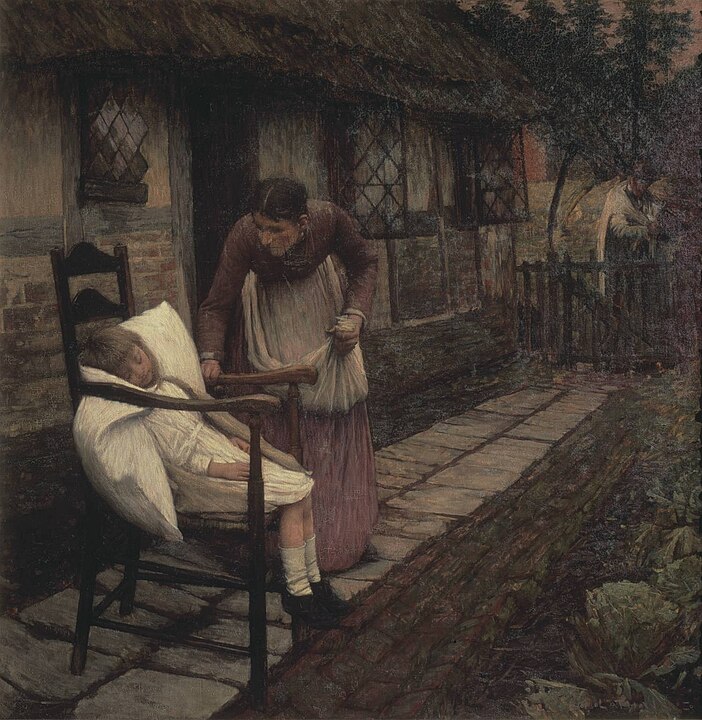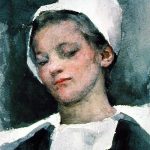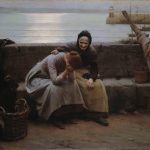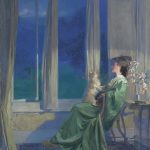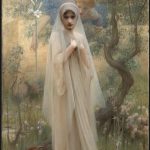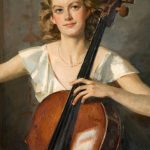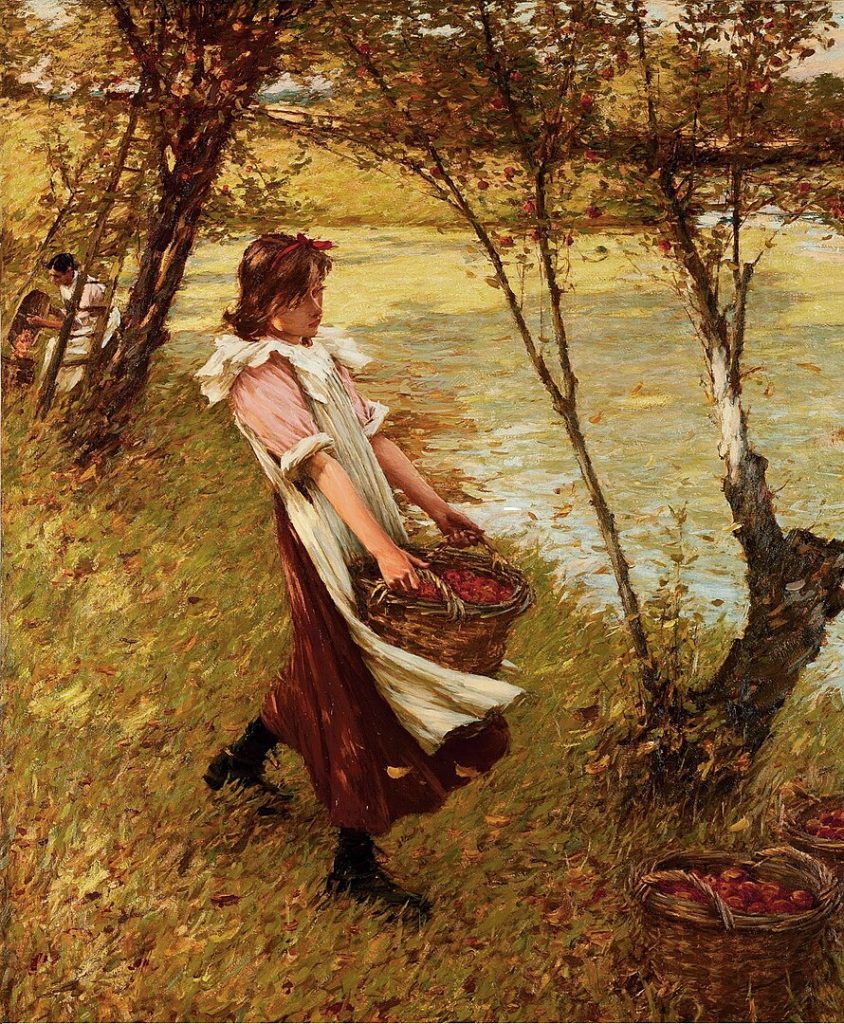
Henry Herbert La Thangue (1859–1929) was a British painter known for his contributions to the Newlyn School, a group of artists associated with the Cornish fishing village of Newlyn. La Thangue’s work often focused on rural and agricultural scenes, depicting the lives of working-class people in a realistic and sympathetic manner. Here is an overview of his biography:
- Early Life and Education: Henry Herbert La Thangue was born on April 19, 1859, in Croydon, Surrey, England. He showed an early interest in art and began his formal artistic education at the Royal Academy Schools in London.
- Artistic Influences: La Thangue was influenced by the French Barbizon School and the Realist movement. His interest in depicting scenes from rural life and the natural environment aligned with the themes popular among the Newlyn School artists.
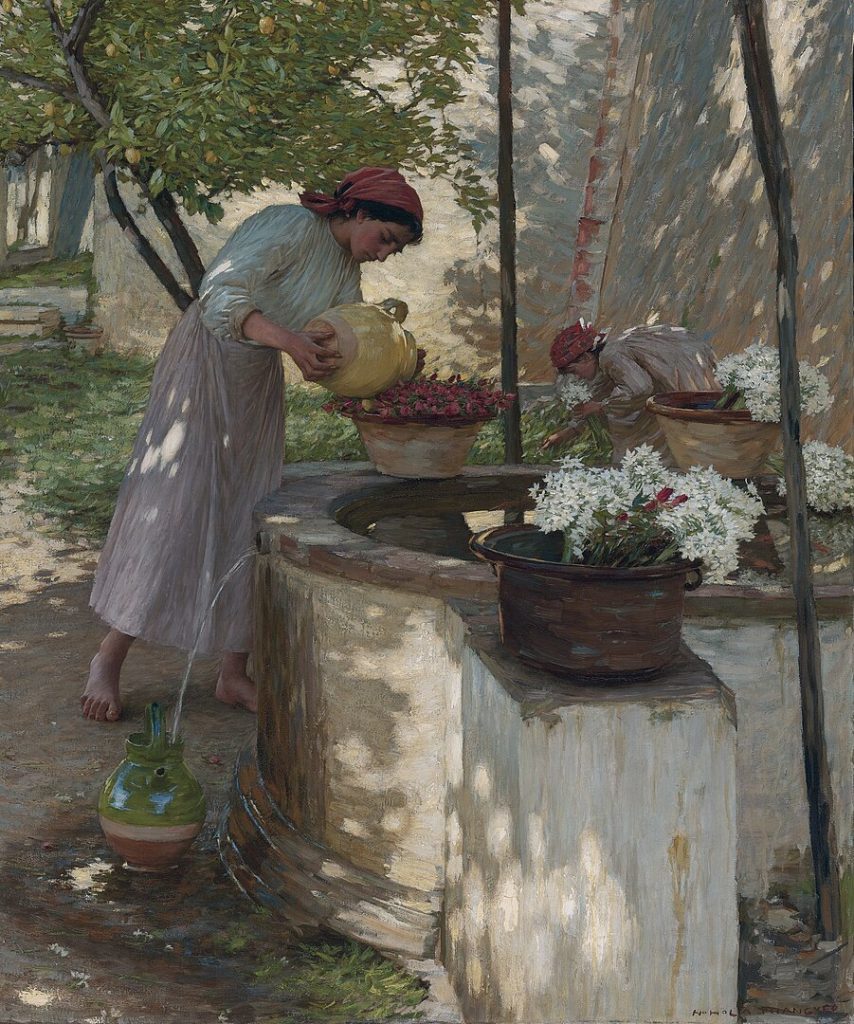
- Association with the Newlyn School: La Thangue became associated with the Newlyn School in the late 1880s. This artistic colony, situated in Cornwall, focused on portraying the daily lives of the local fishing community. La Thangue’s paintings often featured farmworkers, peasants, and scenes from rural life.
- Exhibitions and Recognition: La Thangue exhibited regularly at the Royal Academy and other major art institutions in London. He gained recognition for his skillful portrayal of light and atmosphere in his paintings. His work was well-received, and he became a respected figure in the British art scene.
- Travel and Studies: La Thangue traveled extensively throughout his career, studying art in France and Italy. His exposure to different landscapes and cultures influenced the diversity of his artistic subjects.
- Technique and Style: Known for his technical proficiency, La Thangue often employed a realist approach in his paintings. He paid careful attention to the effects of light and shadow, creating scenes that were both naturalistic and atmospheric.
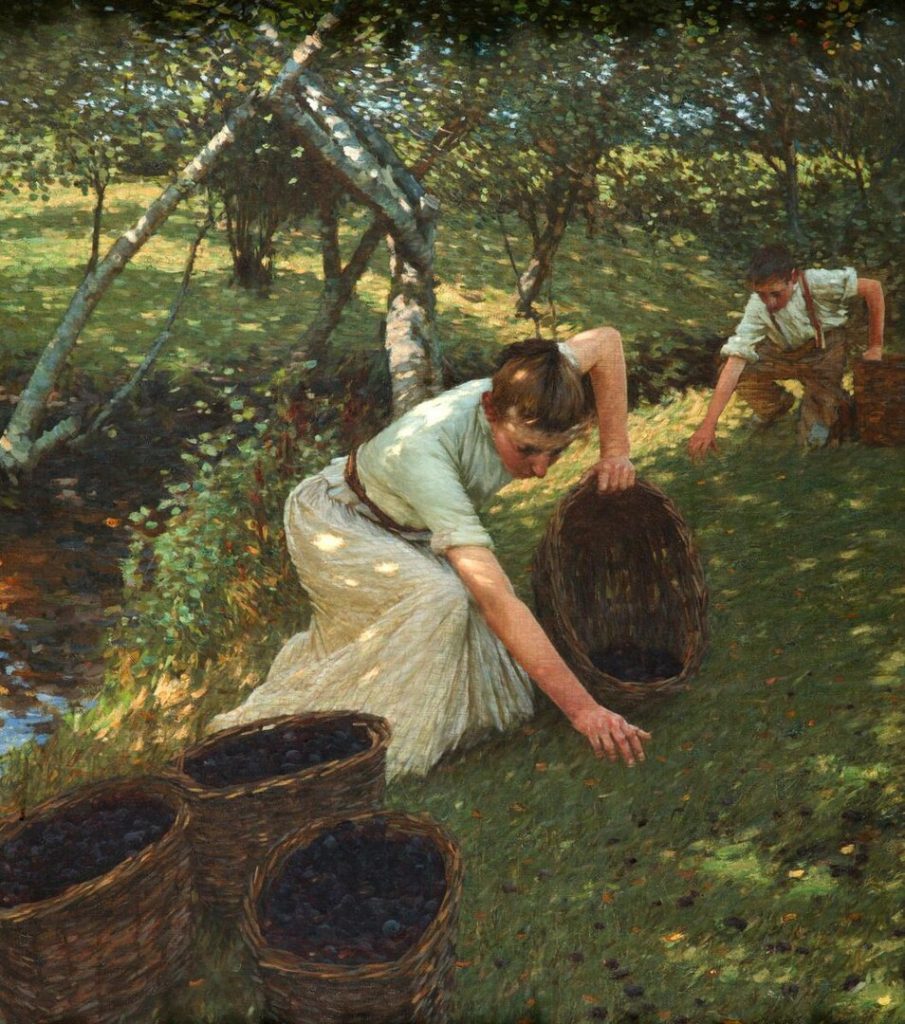
- Later Years: In the early 20th century, La Thangue continued to paint and exhibit his work. He also worked as a teacher at the St. John’s Wood Art School in London. His later paintings included landscapes and scenes from the South of France.
- Legacy: Henry Herbert La Thangue’s work is appreciated for its technical skill and its focus on everyday life, particularly the lives of rural and working-class people. While perhaps not as widely known today as some other artists of his time, his contributions to the Newlyn School and the broader British art scene are recognized.
Henry Herbert La Thangue passed away on December 21, 1929, leaving behind a body of work that continues to be appreciated for its sensitivity to human subjects and its skillful execution.
